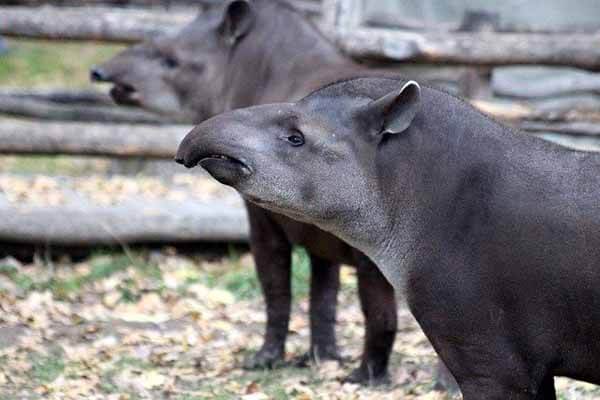The Arctic fox is a predatory animal of Canidae family.
Their triangular muzzle and fluffy tail give the foxes an appearance similar to foxes. Like all foxes of this genus, foxes belong to the family of dogs. There are other interesting facts about Arctic foxes.
An animal has taken root on the islands and the coast washed away by the Arctic Ocean. Hence the alternative species names: polar or arctic fox. The average weight of the fox is only 3.5 kg and its height in the crest does not exceed 30 cm. White and blue foxes are distinguished by their color. We have collected for you the most amazing facts about Arctic foxes.
Interesting facts about Arctic foxes
- The blue fox lives on the islands. Meanwhile, white foxes have taken a fancy to coastal mainland areas.
- Arctic Foxes are the only family of dogs that dramatically change the color of their wool depending on the season. In summer, white foxes wear coffee or grey skins.
- The fox has many natural enemies. He is often attacked by wolves, wolverines, and even polar owls.
- The species name comes from the Greek language. It means “hare’s paw” in Greek.
- The Arctic Fox family usually includes one male, several females from different generations, and the last brood of cubs. Usually, the families live separately, but sometimes they are united in small groups.
- The beast is omnivorous. It is most partial to lemmings but eats plants, eggs, berries, and algae.
- The Arctic fox hunt exists because of the high value of fur. For northern peoples, it forms the basis of the entire fur market.
TOP 3 most interesting facts about Arctic foxes
- In winter, sly foxes often become invisible companions of polar bears. So they can enjoy the remains of someone else’s successful hunting without wasting their strength.
- The beast can survive a few days of hunger strike. During this time, it is maintained by a natural stock of natural fat.
- Foxes have a special status in Iceland. It’s the only land mammal living in the country.
More interesting facts about Arctic foxes
Arctic fox dens are intricate stroke systems. Such labyrinths protect offspring and allow them to hide successfully from predators. However, the greatest threat to the population is still human. A minimum of 20 fox skins is required to create one coat.
The other threat to foxes is the red fox. Due to global warming, it is moving further north, expanding its territory and becoming a dangerous competitor to foxes.
Did you like interesting facts about Arctic foxes? Share it with your friends.
See also 50 most interesting facts about foxes
Fun Facts About Arctic Foxes
Arctic foxes have an incredible ability to withstand the coldest climates and thrive in treeless areas. With its long, white fur, short legs, and rounded ears, this animal is a favorite of travelers to the Arctic. It is also known for its keen sense of smell and is an excellent hunter. Here are some interesting facts about the arctic fox. Learn more about its appearance and personality.
The Arctic fox is a small mammal, weighing between six and twenty-five pounds. It lives in burrows that are 100 square feet in area. This animal is well adapted to the cold climate. It has a highly developed sense of hearing and smell and uses these senses to detect prey under the snow. Puppies are born at the beginning of summer and rely on their parents for a short time. By winter, they have learned to fend for themselves and survive without their parents.
This fox lives in icy tundra environments and is at risk of becoming extinct. It is the most popular fur-bearing animal in the world and can have up to twenty foxes to make one coat. It is not bothered by temperatures below -70degC and can even eat its own feces. So, if you’re looking for a unique gift for a cherished pet, here are a few interesting facts about the Arctic fox.
The Arctic fox has a large circumpolar distribution, inhabiting northern Europe, Asia, and North America. Its range extends to Greenland, Iceland, Svalbard, and Bering Sea islands. Their habitat is primarily a tundra environment with pack ice and a dense bushy coat. The Arctic fox’s main predators are eagles, polar bears, and wolves.
The arctic fox is a unique animal. It has small ears that help it retain heat, so it can survive in temperatures as low as 50 degrees below zero. It lives in a snowy environment and can live in snowbanks. Despite its relatively small size, this species has the ability to withstand extreme temperatures and is often the most vulnerable species in the world. And it can be dangerous to humans too!
The Arctic fox is a very interesting animal. It is small and playful. It is referred to as the clown of the tundra. It has adapted well to the harsh climate by using extensive tunnel systems and a thick, white coat. In the wild, an Arctic fox can survive in temperatures of -70 degC. And it has a large paw. Its front-facing ears and tail make it easy for you to spot an arctic fox.
The Arctic fox is a member of the canid family and is the only land mammal native to Iceland. It is 18 to 27 inches long and weighs around six pounds. Female arctic foxes are smaller than males. An average adult arctic wolf weighs 7.7 pounds, while an arctic fox weighs 6.4 pounds. They are fascinating animals that can be found in almost any area of the world.
An arctic fox can live in any part of the world. Throughout its life, the arctic fox is a scavenger and hunts rodents, birds, and fish. They also follow the path of polar bears, which feed on leftovers. They give birth in spring and have large litters of five to eight pups. The arctic fox is found in most populated areas, but it has only been introduced to coastal areas.
The arctic fox is a scavenger and carnivore. They eat rodents, birds, and fish. They also follow their polar bears, which means they eat their leftovers. It is thought that a female arctic fox can have up to five or ten pups per year. These pups are typically born in the spring and remain dependent on their parents for a short period of time until they grow up.
The arctic fox is a solitary animal, but it is an important member of the environment. It eats rodents and dead animals and helps to keep the environment clean. Its solitary lifestyle allows it to thrive in the extremely coldest places on earth. Despite its solitary nature, the Arctic fox is a beloved pet with visitors. It is the only land mammal native to Iceland and is a polar bear-friendly species.









Thank you for the article! Such interesting and amazing arctic foxes facts!